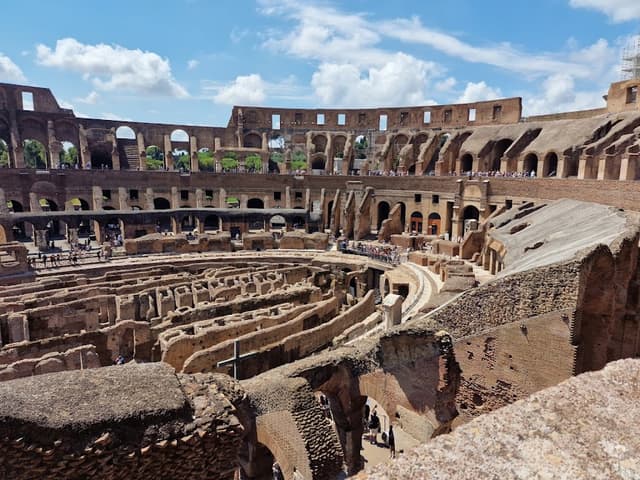Rome, Italy
Save for Later
Share
Rome, Italy
Clarissa Morello
Goethe said: "Rome is the capital of the world! The entire history of the world is connected to this place, and I feel like I was born a second time, that I was truly resurrected, the day I set foot in Rome. Its beauties have lifted me little by little to their height." Anyone who has set foot in Rome for the first time has had the feeling of no longer being the same and it is not difficult to understand why it has inspired so many directors to create hundreds of films that tell the story of this city. As a student of Cultural Heritage and Archaeology, I was astonished when I saw with my own eyes those monuments that are symbols of the city and all that history that supports the foundations of Rome. I recommend everyone to visit Rome more than once to discover more and more of a city that leaves you breathless.
Updated ago
Save
Share
The monuments
The Colosseum
The Colosseum is an elliptical amphitheatre in the centre of the city of Rome, Italy, just east of the Roman Forum. It is the largest ancient amphitheatre ever built, and is still the largest standing amphitheatre in the world, despite its age. I recommend visiting it to gain a better understanding of its ancient functions.

Colosseum
@ClarissaMorello
Add to
Details

Buy to unlock full guide
Access all the local insights and recommendations from @ClarissaMorello when you purchase this guide.
ABOUT THE AUTHOR
Clarissa Morello
Italy 📍
"Vast is the traveler's dwelling."
I've always loved traveling, discovering and visiting new places. I love getting in touch with new things and I enjoy sharing them with others. Diversity is a wealth, not a limit. I've visited wonderful places where uncontaminated nature takes your breath away like in Norway, Sweden or deserted places with golden sand like Morocco. Asian cultures, coral reefs that never cease to amaze. As a graduate in Cultural Heritage and Archaeology I have an immense love for art and the history of man and I also love the world of plants and my thesis in Archaeobotany confirms this. Man and the environment are connected entities and when man comes into contact with different environments his being changes forever. I hope I can also transmit the love for my land, Salento (Puglia, Italy) which is a land rich in traditions, good food, wonderful beaches and wild nature.
What's included
Digital Map
Fully interactive, digital map for finding places nearby
50 places
50 hand-picked places with notes from the creator
15 photos
Beautiful, hi-res photos from the creator
DESTINATION(S) COVERED
Rome, RM, Italia
FOCUSES AND THEMES
Business
Couples
Family
Groups
Gluten-free / Celiac
LGBTQ+
Vegan
Vegetarian
Adventure
Architecture
Art
Boutique
Budget
Coffee
Faith
History
People & Culture
Photography
Relaxation
Romantic
Shopping
Format
Guide
Guides typically include detailed information and how-to’s about a destination as well as suggested places to try.
COMMON QUESTIONS
What is Thatch?
Thatch is an online marketplace that provides instant access to thousands of vetted local experts and premium travel guides - making it the easiest and most affordable way to take high quality trips with less stress.
For travel creators (tastemakers, travel advisors, influencers and local experts) Thatch makes it easy to curate, publish, and sell digital travel guides, itineraries and personalized planning services.
What if I’m not satisfied with my purchase?
How do I access my purchased guides?
Can I access my guide offline?
How often are guides updated?
Can I request a personalized guide or itinerary?
Can I sell my own travel guides and itineraries?
Save for Later
Share